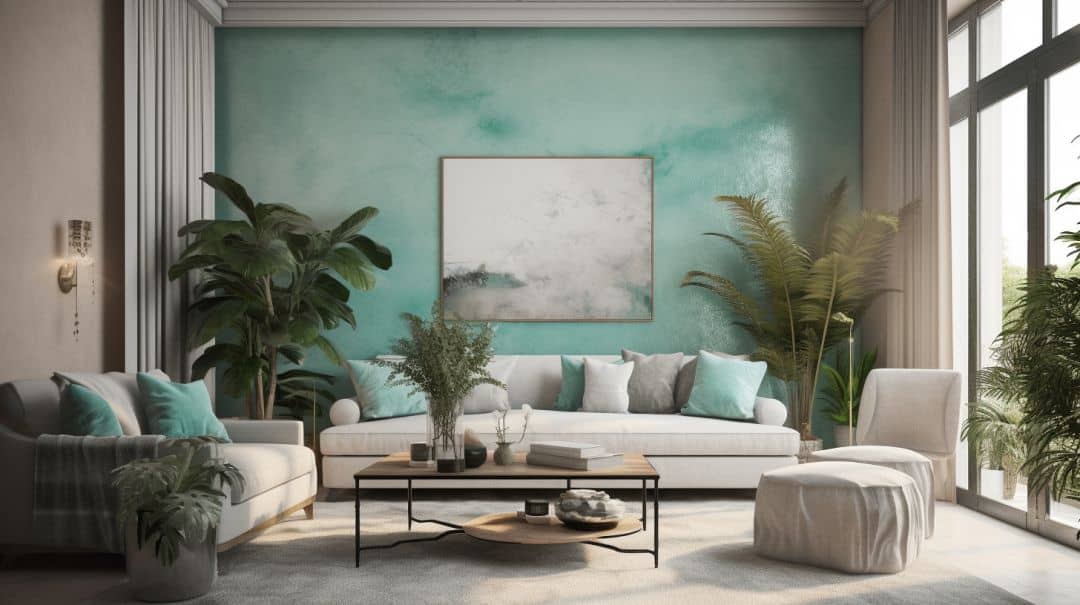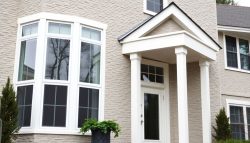Unveiling the Best Choice for Your Walls: A Detailed Look at Materials, Durability, and Aesthetics
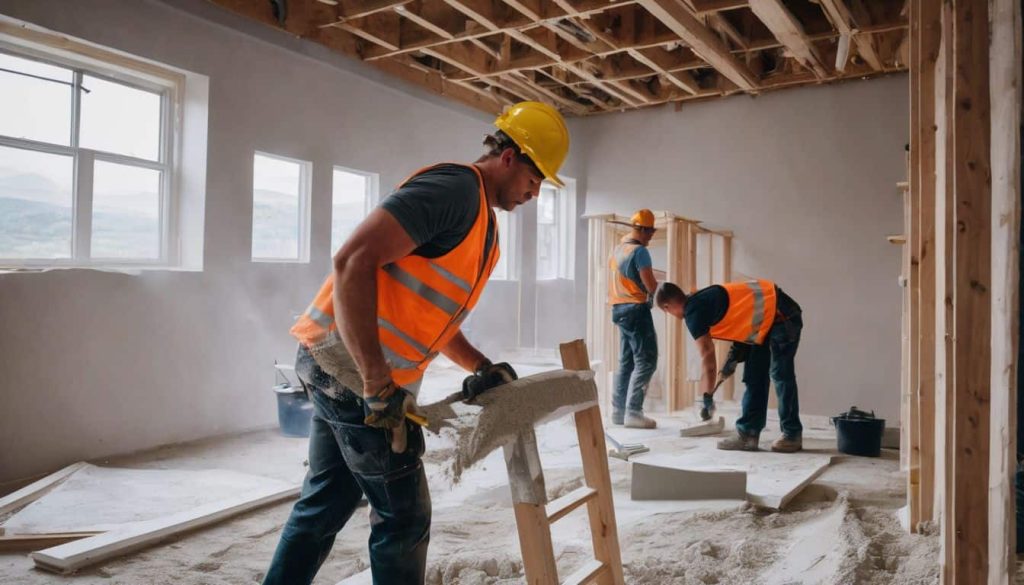
Choosing the right wall finish during a home remodel can be a challenging task. Whether to use plaster or drywall often becomes a point of debate for homeowners and builders alike.
This blog post will provide an in-depth comparison between interior plastering and drywall installation, discussing their pros and cons to help you make the most informed decision.
Stay tuned if you want your living space to showcase not just aesthetic appeal but also long-term durability!
Key Takeaways
- Plaster is strong and gives a smooth, classy look to walls, but it’s harder and costlier to install. It does resist fire better than drywall.
- Drywall is cheaper, easier to put up, and simple to repair. However, it isn’t as tough or fire – resistant as plaster.
- Both plaster and drywall have their own benefits like sound insulation and temperature control so you’ll need to decide based on what fits your home best.
- Whether you pick plaster or drywall depends on factors like budget, the look you want for your house, and even how long-term you want your wall finish to be.
Understanding Plaster and Drywall

On the other hand, drywall consists of large flat panels made of gypsum sandwiched between two layers of paper; these panels get fastened onto the wall studs. Both materials have distinct characteristics which influence their usage in different scenarios.
So it’s important for homeowners to understand each one before deciding on their preferred option for interior walls.
What is Plaster?
Plaster is a building material primarily made of lime or gypsum. Used extensively for wall and ceiling coverings, plaster offers great durability once it hardens. This hardened surface can be easily painted over to achieve an aesthetic appeal.
One unique feature of plaster is its resistance to mold which makes it ideal in a damp environment because it’s easy to clean and maintain. However, the application process needs careful preparation as it involves mixing the base substance with water into a smooth paste before applying it on surfaces.
What is Drywall?
Drywall, often referred to as plasterboard or gypsum board, forms the core component of many interior walls and ceilings in modern homes. Made from a blend of water and gypsum, drywall provides a smooth surface that’s ready for paint once installed correctly.
These panels are manufactured by sandwiching the gypsum mixture between two large sheets of heavy-duty paper.
Being fire-resistant makes drywall an excellent choice for home building; it also contributes significantly to sound and temperature control within your home. As one of the cheaper building materials available on today’s market, drywall installation can be cost-effective but does have its drawbacks such as not being suitable for use in moisture-rich areas like bathrooms due to its non-water-resistant nature.
Pros and Cons of Interior Plastering
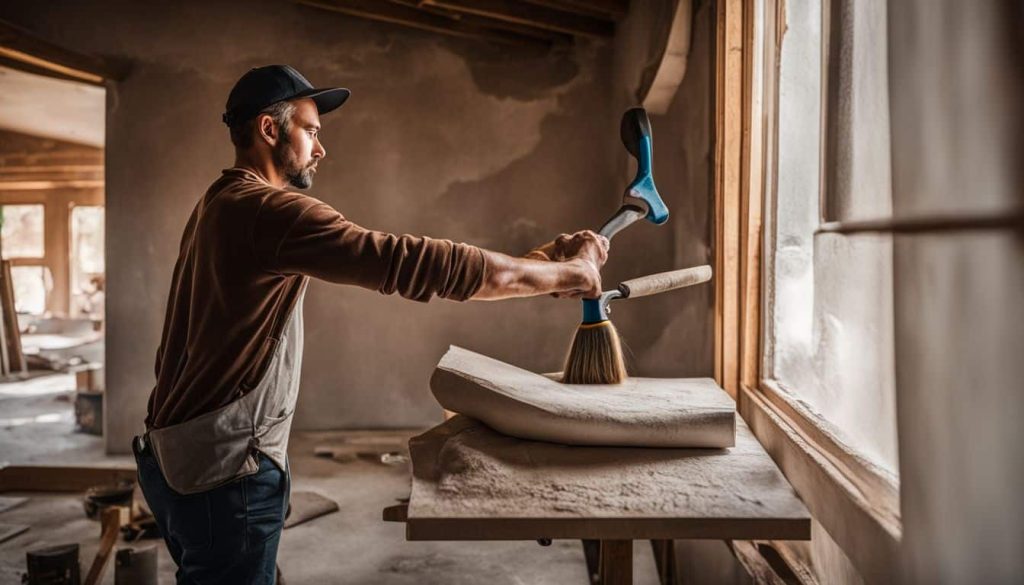
Plastering interior walls provides a smooth, hard surface that resists damage and can offer better insulation. It also creates a classic aesthetic appearance through its versatility in texture and finish.
However, the plastering process is time-consuming, and it requires skilled labor for application and maintenance. Additionally, repairs on plastered walls can be more complex due to their layered structure.
Benefits of Plaster
| Benefits of Plaster | |
|---|---|
| Hardiness and Durability | Once set, plaster forms a tough surface that can easily withstand accidental impacts without showing signs of damage. |
| Superior Sound Insulation | Plaster offers superior sound insulation, considerably reducing noise transmission between rooms and making your home more peaceful and quiet. |
Drawbacks of Plaster
Plaster, as a wall finish option, has its drawbacks. Here is a list that elaborates on some of these disadvantages.
| Drawbacks of Plaster | |
|---|---|
| Moisture Absorption | Plaster absorbs moisture quickly due to its porous nature, causing difficulties when painting over it. |
| Brittleness | The brittleness of plaster makes it susceptible to cracks and damages. |
| Complex Repairs | Repairing plaster can be daunting; it demands time, expertise, and money. |
| Time-Consuming Installation | Unlike drywall, plaster requires more time because multiple coats need to be applied. |
| Cost | Plaster might not offer the best value for home renovation projects due to its higher cost compared to drywall. |
| Installation Complexity | A third-party professional or skilled homeowner must handle the installation. |
| Unsuitable for Exterior Walls | Plaster is unsuitable for exterior walls as weather conditions may affect its durability. |
| Specialized Fasteners | Hanging items on plaster walls requires specialized drywall fasteners, resulting in additional costs. |
Pros and Cons of Drywall Installation
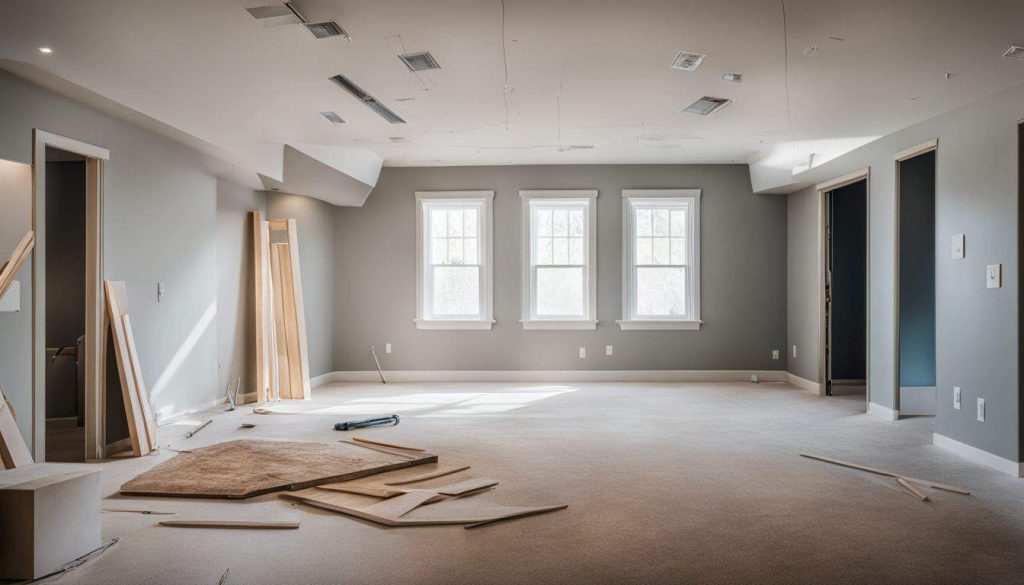
Drywall installation has its advantages, such as being easier and faster to install than plaster. It is a relatively inexpensive wall covering method that can be done by homeowners with some DIY skills.
On the plus side, drywall provides great insulation properties and comes premade in panels for easy transportation and handling. Drywall also offers excellent fire resistance due to the gypsum composition.
However, it also comes with disadvantages such as being less durable; it’s prone to cracks, holes, and water damage compared to plaster. While drywall repair kits are available on the market, fixing larger damages often requires replacing entire sections of the material.
Aesthetically speaking too, drywall does not provide the same traditional or high-end finish that plaster does.
Advantages of Drywall
Unveiling the benefits of drywall in home renovations, we see a variety of advantages.
| Advantages of Drywall | |
|---|---|
| Fire Resistance | Drywall is known for its fire-resistant qualities, potentially saving lives and property. |
| Convenience in Repair | Unlike other options, drywall repairs are straightforward and less time-consuming. |
| Sound and Temperature Insulation | The installation of drywall serves as an effective barrier to noise pollution and maintains interior temperatures. |
| Costs | Drywall is economical compared to alternatives like plaster, making it cost-effective for homeowners on a budget. |
| Versatility in Use | Common areas of homes often favor drywall due to its adaptable nature and ease of installation. |
| Stability | Drywall showcases superior stability levels compared to materials like plaster, providing more structural integrity for your walls. |
Disadvantages of Drywall
Despite its many benefits, drywall installation comes with several drawbacks that homeowners should consider:
| Disadvantages of Drywall | |
|---|---|
| Installation Challenges | Installing drywall can be challenging on curved walls, making it less flexible compared to plaster. |
| WiFi Signal Blockage | Drywall is thinner than plaster, which means it doesn’t block WiFi signals as effectively. |
| Sound Insulation | It does not offer the same level of sound insulation as plaster, potentially causing higher noise levels in the home. |
| Fire Resistance | In terms of fire resistance, drywall falls behind plaster: it’s less fire-resistant and may add another layer of danger in case of a house fire. |
| Susceptibility to Damage | Though easier to cut into for plumbing or electrical work, this thinness makes drywall more susceptible to damage such as holes and dents. |
| Texture and Finishing | Some people find the texture and finishing of drywall less appealing than traditional plaster due to its factory-made appearance. |
| Eco-Friendly Options | The eco-friendly options for drywall are limited compared to those available for plaster – an important consideration for environmentally conscious homeowners. |
Comparison: Plaster vs Drywall
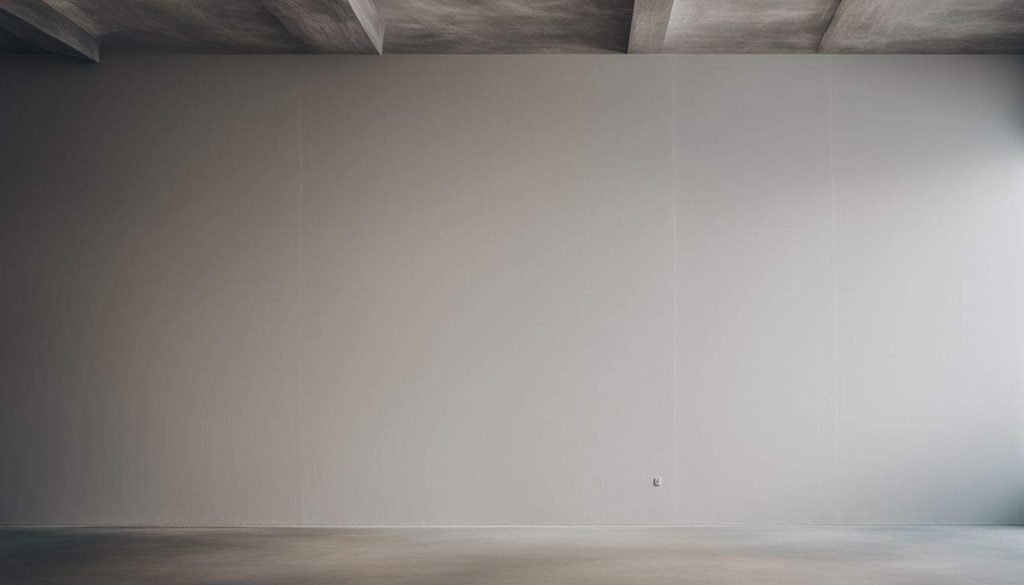
In comparing plaster and drywall, we consider factors such as appearance, where the smoothness of plaster gives a high-end look, unlike drywall. Durability-wise, plaster offers long-term solidity but repair can be challenging compared to easier-to-fix drywall.
From a cost perspective, while initially less expensive than plaster due to faster installation time and lower material costs, over time drywall can incur more maintenance expenses.
Considering installation process comparison, installing plaster requires professional expertise for proper application of multiple coats over lath or gypsum board; meanwhile anyone with basic DIY skills can hang drywall using specialized fasteners.
Beyond these points are other considerations like wall insulation quality and environmental impact which further distinguish them in this discussion between interior wall treatments.
Appearance
Plaster walls deliver a unique, smooth surface that exudes a classical charm. The pigments of paint appear vibrant on the solid plaster surface, creating an aesthetic appeal that’s hard to achieve with other materials.
Especially when it comes to high-end homes and historic renovations, nothing surpasses the visual impact imparted by beautifully applied plaster.
On the other hand, drywall can provide a clean and modern look, ideal for contemporary styles. It lends itself well to textured or faux finishes if homeowners desire something beyond flat painted walls.
With professional installation and finishing techniques, drywall can emulate almost any desired look – from subtle texture variations to dramatic architectural effects.
Durability

Plaster walls boast incredible longevity, often outlasting the house they’re part of. This is due to plaster’s hard nature that forms an impressively durable surface, rigorously standing up against knocks and collisions.
An added benefit is its resistance to mold which further enhances its lifespan. That said, a major drawback lies in plaster’s susceptibility to cracks over time as it has a higher tendency to crack than drywall.
However, veneer plaster combines the durability of traditional plaster with drywall’s strength giving homeowners another option for their interior walls while keeping in mind that it demands greater expenditure and expertise during installation.
Drywall panels offer durability but not quite matching up to plaster standards.
Cost
Costs play a significant role in the choice between plaster and drywall. Plaster tends to be more expensive due to its labor-intensive installation process compared to drywall. Veneer plaster, while versatile and aesthetically pleasing, leads the pack in pricing.
On the other hand, installing drywall is less costly but can create a mess during installation which adds to clean-up costs. Homeowners need to make their decision based on a balance of all factors including aesthetics, durability as well as budget constraints.
Installation
Drywall installation begins with measuring the space, then cutting enough drywall sheets to cover the area. These are affixed to wall studs using specialized fasteners and a pliable compound.
By contrast, installing plaster takes more time and skill as it involves creating a paste by mixing plaster powder with water. Once mixed, two coats of this paste get applied onto the walls or ceiling for an even finish.
The veneer plaster process is even more complex because it involves multiple layers of materials that require professional handling for proper application.
Conclusion
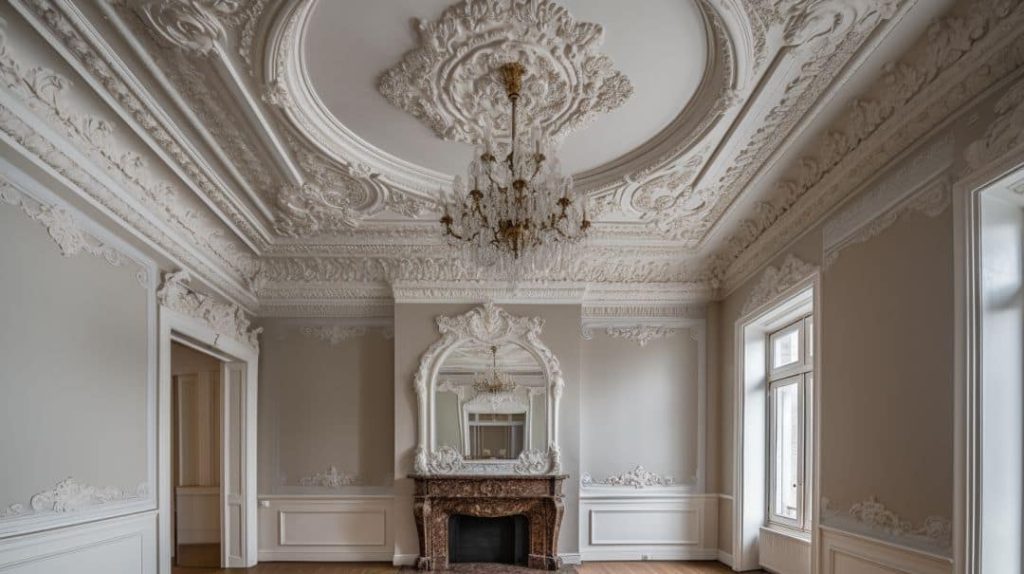
Choosing between interior plastering and drywall installation ultimately depends on your specific needs and preferences. While plaster offers durability and a high-end finish, drywall shines in terms of cost-effectiveness and easier repair.
Consider factors like aesthetic appeal, acoustic performance, fire resistance, time, cost efficiency, and ease of repairs when making your decision.
FAQs
What are the main differences between plaster and drywall?
The key differences between plaster and drywall lie in their installation time, cost comparison, durability, lifespan, aesthetic appeal, fire resistance, texture, and finishing.
Why might someone choose plaster over drywall for their interior walls?
Many homeowners prefer plaster for its long-term durability to handle more weight when hanging things on it and its ability to conceal surface imperfections better than drywall.
Are there any major disadvantages of using plaster or drywall?
Yes! The disadvantages of using plaster include higher material and labor costs due to specialized application techniques while drawbacks of installing drywall mostly relate to lesser acoustic performance compared with plaster.
Is it easier to repair a hole in a wall if it’s made out of drywall or plaster?
Drywall is generally easier to repair since you can use a simple patching process with some joint compound while repairing holes in traditional three-coat plasters require professional expertise due to its complex layers structure.
How do insulation properties compare between interior wall coverings like Plaster vs. Drywalls?
While both provide decent levels of insulation against sound and heat, gypsum-based materials such as standard Drywalls are often favored by contractors as they offer greater energy efficiency compared with traditional Lath & Plaster configurations.
Can either option be considered an environmentally friendly choice?
Although the production process for both options does have an environmental impact; eco-friendly versions of gypsum board (drywalls) contain recycled paper fiber which makes them slightly more sustainable than regular Plasterboards.


